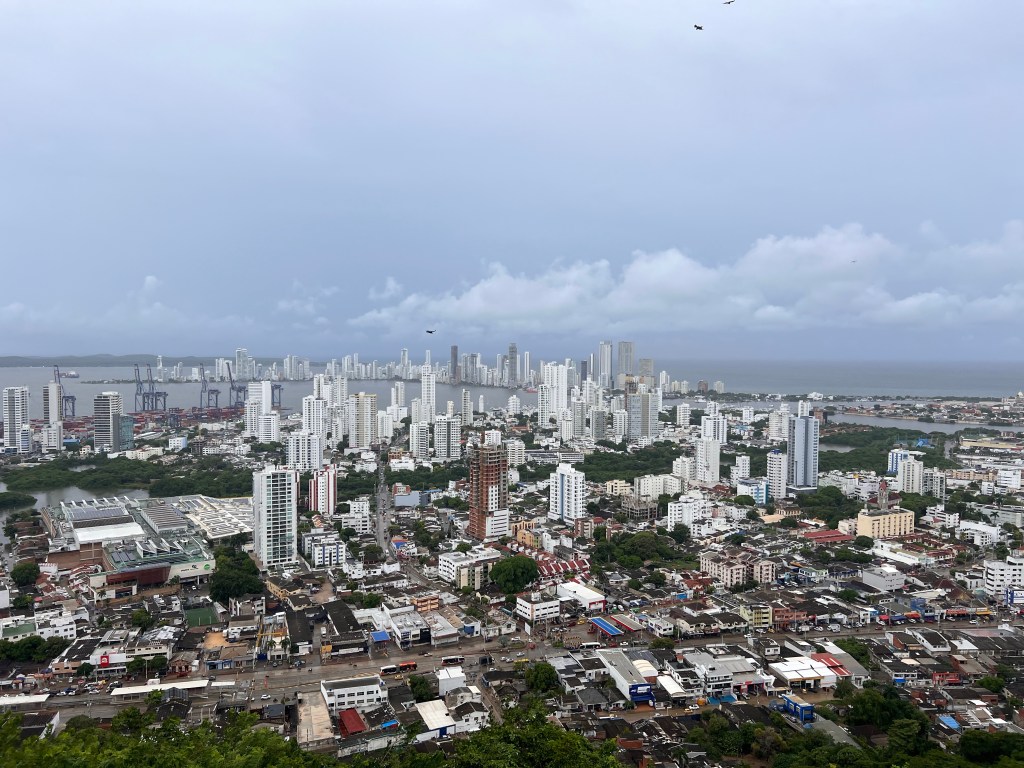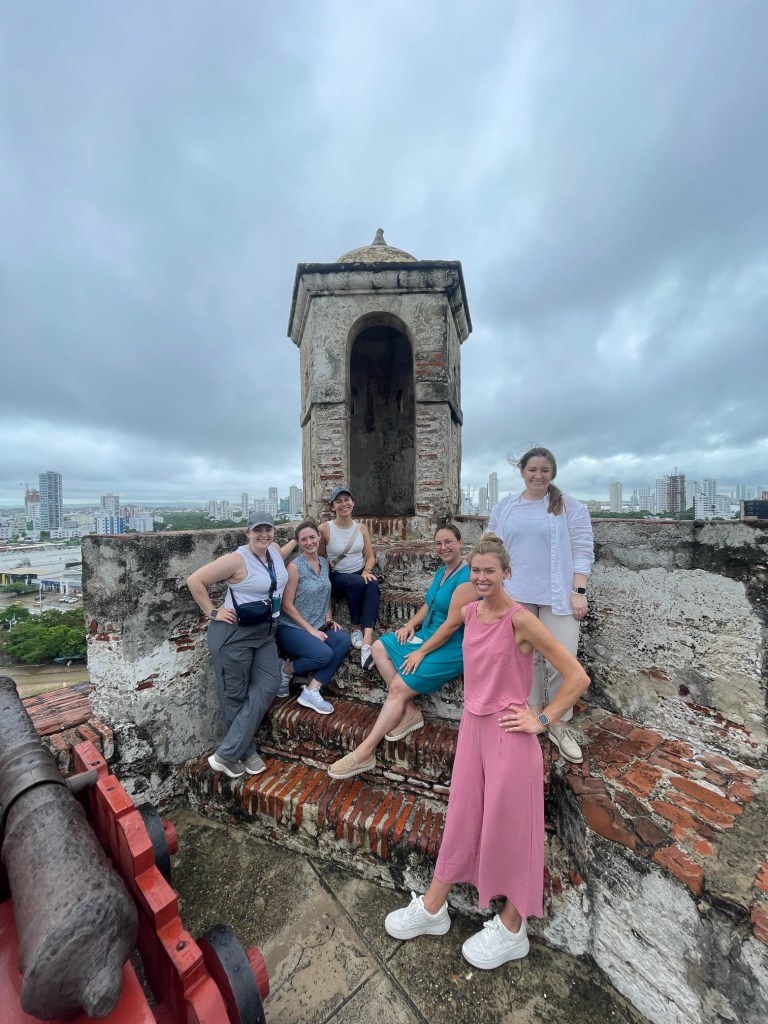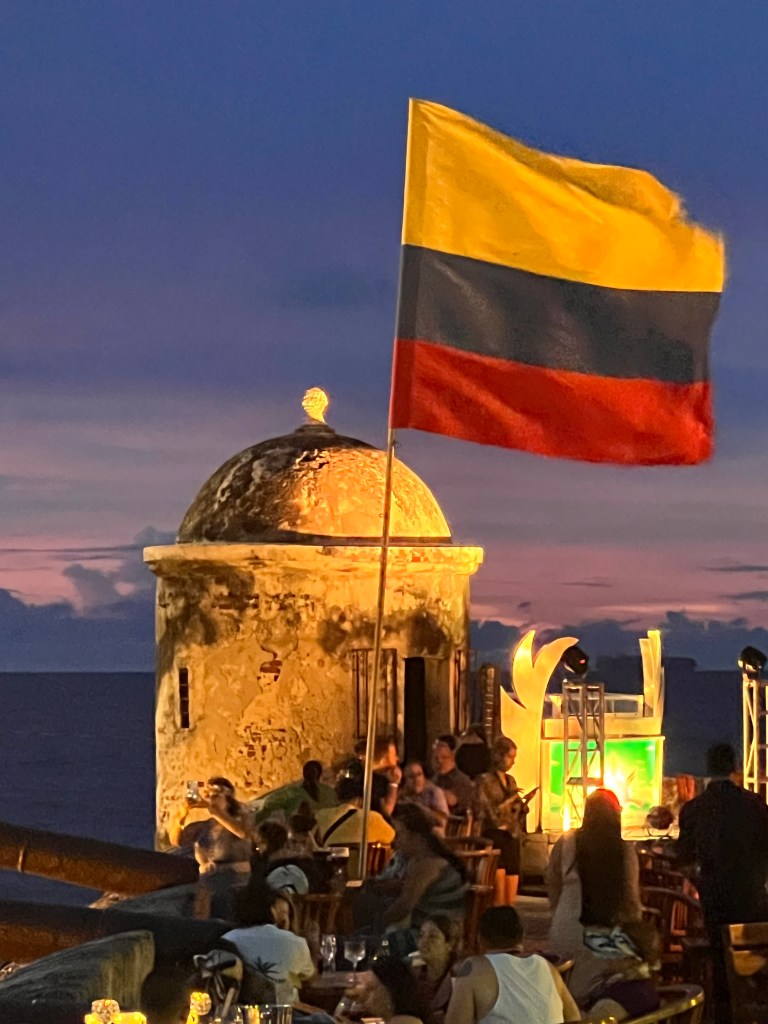There is a silent air of sadness as Class 52 arrives early to the Medellín Airport. With so much to reflect on, and a great connection with two wonderful guides, many of us found it viscerally difficult to say goodbye to a city we had arrived in only 3 days prior. Nonetheless, in true CALF fashion, we quickly transitioned our focus forward to our next destination – Cartagena, Colombia.
We arrived in Rafael Nunez International Airport and met our two new guides. Issac and Jaime are excited to show us their city and you can see the passion they have for their home town.

Our first stop is at the Convento de Santa Cruz de la Popa, at the highest point above the city. Looking down over Cartagena from this vantage point we can see significant differences in city infrastructure and environments. The city is flooding in spots as there is a high tide and lots of water from the rainy season. One fellow commented that in the North East where the working class section of the city is, and where the outdoor market is, we could hear music ALLLL the way from the top of the hill, and from the West, the wealthier side of the neighborhood, we could only hear horns honking. We could almost feel the community coming from the music, not unlike how we felt being in Communa 13 in Medellin. “La Popa” was a great introduction to this city because of the history displayed inside as well as the view from the vantage points.

Leaving La Popa, heading to old town, we saw street vendors in the rain displaying a local dish – Cartagena Arepas, a grilled, baked, or fried cornmeal cake. Of the six different versions of arepas found throughout Colombia, Cartagena’s version is the only to incorporate ingredients and cooking methods from the historical inhabitants of the city – corn from the indigenous population, the eggs from the Spaniards and the cooking method, influenced by the African population.

We were able to experience a fantastic lunch in the old city at the back of La Mulata Restaurant. Our dining room mimicked the structure of the wall surrounding the city, and we ate beneath a ceiling covered in colored umbrellas. In this wonderful space, we enjoyed a taste of Cartagena’s most popular ingredients – fresh seafood.
Continuing our venture through the Old City, the group made a short venture over to Cartagena’s most visited tourist attraction – Castillo de San Felipe de Barajas, or simply San Felipe Fort. This defensive fortification was responsible for protecting the Spanish port of Cartagena, and also housed the gold that was claimed by the Spanish throughout the region. Set atop a hill, the fort was the perfect vantage point for detecting raiding pirates from the sea and land in three different directions. In a somewhat interesting twist for many of us, pirates were often supported in their work financially by rival nations, or were sometimes the nations themselves! The British, French, and Dutch all supported piracy in this area in an attempt to wrest control of this valuable territory from Spain. In 1537, the Spanish completed construction on the 7-mile wall that encircled and protected the Old City. Further construction in the early 17th century would provide the fortification tunnels that provided cover for the movement and positioning of troops.

Cartagena declared its first independence from Spain on November 11th, 1881, a date celebrated with much excitement in the city each year. However, in 1815, Spain decided that it wanted its territory back and so re-conquered the city. Then, in 1821, Cartagena obtained its independence for good as Simon Bolivar won independence from Spain for all of Colombia.
After the fortress, our guides took us to the most beautiful spot in the city to relax, watch the sunset and enjoy each others company. We went to Café Del Mar atop the old city wall. We had beautiful views and plenty of picture taking by all. It was great seeing two or three cargo ships that must have come through the Panama Canal, where we were a lifetime ago at the beginning of our trip.

As we sat on top of the wall in old town watching the setting sun light up the skyscraper hotels on the new Cartagena, we reflected on a prior view we held during the day. From the top of La Popa, we could see down across the vastness of Cartagena. This view provided a stark contrast from the West to the East of the city, from working class to upper class. This city requires both. One side provides significant investment within the city, and the other side provides rich culture and a historic connection and energy that cannot be manufactured no matter how much money you invest in it.

David Ogilvie, Diana Melero, Chris McGlothlin

Leave a comment